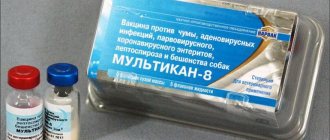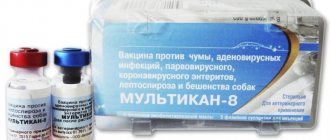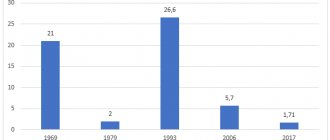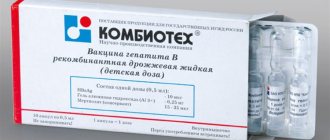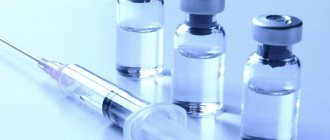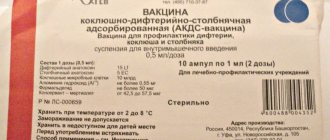"REGEVAK B" - a vaccine for the prevention of viral hepatitis B
Pneumococcal polysaccharide vaccine, conjugated, adsorbed, thirteen-valent
Manufacturer: JSC Binnopharm, Russia.
Protects against diseases: viral hepatitis B.
Applicable: for newborns, children (vaccine without preservatives), adolescents and adults.
Included in the national vaccination calendar.
Advantages of the REGEVAK V vaccine:
- A course of vaccination leads to the formation of specific antibodies to the hepatitis B virus in more than 90% of vaccinated people.
- Rare side effects.
- The vaccine version for children does not contain toxic preservatives.
Indications for vaccination with the Regevak B vaccine
Prevention of hepatitis B in children within the framework of the national schedule of preventive vaccinations and persons from groups at increased risk of infection with the hepatitis B virus:
children and adults in whose families there is a carrier of the HBs antigen or a patient with chronic hepatitis B;
Indications for use
- Healthy children and adults - for the prevention of infection and development of viral hepatitis B within the framework of the National Calendar of Preventive Vaccinations of the Russian Federation
- Children and adults at risk of contracting the hepatitis B virus (family contact with a carrier of the virus; those born from a mother who is a carrier of the virus; patients who have received a transfusion of blood or its components; patients with malignant blood diseases; workers of medical institutions, laboratories, students of medical universities and etc.)
health-conscious people Regevak® B hepatitis vaccine
Scheme and method of administration of the Regevak B vaccine
Vaccination against viral hepatitis B is given to all newborns in the first 24 hours of life.
Newborns from mothers at risk are vaccinated according to the 0-1-2-12 schedule (first dose - in the first 24 hours of life, second dose - at the age of 1 month, third dose - at the age of 2 months, fourth dose - at the age of 12 months) . Simultaneously with the first vaccination, it is recommended to inject human immunoglobulin against hepatitis B intramuscularly into the other thigh at a dose of 100 IU.
Children who have not received vaccinations under the age of 1 year and are not at risk, as well as adolescents and adults who have not been vaccinated before, are vaccinated according to the following scheme: 0-1-6 (1 dose at the start of vaccination, 2 doses after 1 year). a month after the 1st vaccination, 3rd dose - 6 months from the start of immunization.)
Vaccinations for persons who have had contact with material infected with the hepatitis B virus are carried out according to the 0-1-2 month schedule. Simultaneously with the first vaccination, it is recommended to administer intramuscularly (to another place) human immunoglobulin against hepatitis B at a dose of 100 IU (children under 10 years old) or 6-8 IU/kg (other ages).
The vaccine is administered to adolescents and adults intramuscularly into the deltoid muscle, and to newborns and young children intramuscularly into the upper outer surface of the mid-thigh. A single dose for newborns and persons up to 18 years of age inclusive is 0.5 ml. A single dose for adults over 19 years of age is 1 ml. Vaccination is carried out within the framework of the national calendar of preventive vaccinations.
Hepatitis B vaccine "Regevac" recombinant yeast liquid
CJSC "MTX", Russia
Release form: 1 ampoule/1 dose/1 ml No. 10 (over 19 years old), 1 ampoule/1 dose/0.5 ml No. 10 (for children and adolescents up to 19 years old inclusive).
Vaccination schedule: 0 day – 1 month – 6 months.
INSTRUCTIONS FOR USE Regevak B
vaccine against hepatitis B, recombinant yeast liquid, suspension for intramuscular administration Regevak B is a drug based on the surface antigen of the hepatitis B virus (serotype ayw) f obtained by DNA recombination on a yeast culture transformed by including in their genome the gene encoding the surface antigen of the virus hepatitis B. One milliliter of the drug contains 20 mcg of HBsAg, 0.5 mg of aluminum hydroxide (sorbent) and 50 mcg of merthiolate (preservative). A suspension of white color with a grayish tint without visible foreign particles, which separates after settling into a clear supernatant liquid and a white sediment with a grayish tint, easily resuspended when shaken. IMMUNOBIOLOGICAL PROPERTIES A course of vaccination leads to the formation of specific antibodies to the hepatitis B virus in more than 90% of vaccinated individuals in a protective titer. PURPOSE Prevention of hepatitis B in children within the framework of the national schedule of preventive vaccinations and in persons from groups at increased risk of infection with the hepatitis B virus: children and adults in whose families there is a carrier of HBsAg or a patient with chronic hepatitis B, children of orphanages, orphanages and boarding schools, children and adults who regularly receive blood and its preparations, as well as patients on hemodialysis and oncohematological patients. Persons who have had contact with material infected with the hepatitis B virus. Medical workers who have contact with the blood of patients. Persons involved in the production of immunobiological preparations from donor and placental blood. Students of medical institutes and students of secondary medical schools (primarily graduates). Persons who inject drugs. In addition to the above categories, all other groups of the population should be vaccinated. METHOD OF APPLICATION AND DOSAGE The vaccine is administered intramuscularly into the deltoid muscle, in newborns and young children into the anterolateral surface of the thigh: administration to another place reduces the effectiveness of vaccination. Shake the ampoule before administration. A single dose for newborns and persons under 19 years of age is 0.5 ml (10 mcg HBsAg). A single dose from 19 years of age is 1 ml (20 mcg HBsAg). Patients in hemodialysis departments are given a double dose of 2 ml (40 μg of HBsAg). The vaccination course consists of three intramuscular injections of the vaccine according to the scheme: 0-1-6 months. If the interval between vaccinations is extended, the next vaccination should be carried out as soon as possible, determined by the health status of the vaccinee. Children over 13 years of age who have not been vaccinated before are vaccinated according to the standard schedule. Children born to mothers who are carriers of the hepatitis B virus, or patients with viral hepatitis B in the third trimester of pregnancy, are vaccinated against viral hepatitis B according to the scheme 0 (on the day of birth) - 1-2-12 months. Vaccinations for persons who have not previously been vaccinated and who have had contact with material infected with the hepatitis B virus are carried out according to the schedule of 0 -1 - 2 months. For patients in hemodialysis departments, the vaccine is administered four times with a month interval between vaccinations. Vaccination against hepatitis B can be carried out simultaneously (on the same day) with vaccines of the national preventive vaccination calendar and inactivated vaccines of the preventive vaccination calendar for epidemic indications. Administration is carried out with different syringes in different parts of the body. For injection, only a disposable syringe is used. The injection site is treated with 70% alcohol before and after the injection. The opening of ampoules and the vaccination procedure are carried out in strict compliance with the rules of asepsis and antiseptics. Do not use ampoules that have a physical defect that leads to a violation of their tightness.” Do not administer intravenously. The drug cannot be stored in an opened ampoule. REACTION TO ADMINISTRATION Side effects when using the vaccine are rare. In 5-10% of cases, pain, erythema and induration may occur at the injection site. In response to the administration of the drug, the following are occasionally possible: a slight increase in temperature, complaints of malaise, weakness, joint pain, muscle pain, headache, dizziness, nausea, vomiting, abdominal pain. All reactions to the injection are weak and usually disappear 2-3 days after the injection. Considering the possibility of developing immediate allergic reactions in particularly sensitive individuals, vaccinated persons must be provided with medical supervision for 30 minutes after vaccination. Vaccination sites must be provided with anti-shock therapy. CONTRAINDICATIONS FOR USE Hypersensitivity to yeast and other components of the vaccine. A severe reaction (temperature above 40°C, edema, hyperemia more than 8 cm in diameter at the injection site) or a complication to the previous administration of the hepatitis B vaccine. Acute infectious and non-infectious diseases, chronic diseases in the acute stage - immunization is carried out no earlier than 1 month after recovery (remission). For mild forms of ARVI and acute intestinal infections, vaccinations can be carried out after the temperature has normalized. Use during pregnancy. The effect of the vaccine on the fetus has not been studied. The possibility of vaccinating a pregnant woman can be considered if the risk of infection is extremely high. FORM OF RELEASE 1 ml (1 adult dose) and 0.5 ml (1 pediatric dose) in ampoules. 5 ampoules in a blister pack, 1 or 2 blister packs in a cardboard pack. The pack contains instructions for use and an ampoule knife or scarifier. VARIATION CONDITIONS For medical institutions (pack of 10 ampoules). According to a doctor's prescription (pack of 5 ampoules). SHELF LIFE, TRANSPORTATION AND STORAGE CONDITIONS Shelf life 3 years Store and transport in accordance with SP 3.3.2.1248-03 at a temperature of 2°C to 8°C out of the reach of children. Short-term (no more than 72 hours) transportation is allowed at temperatures from 9°C to 30°C. A drug that has been frozen or has expired cannot be used. Complaints about the specific and physical properties of the drug should be sent to the State Research Institute for Standardization and Control of Medical Immunobiological Preparations named after L.A. Tarasevich (119002, Moscow, Sivtsev Vrazhek lane, 41″, tel., fax) and to the manufacturer: CJSC Medical-Technological Holding "MTX" (124460, Moscow-Zelenograd, 4th Western Proezd, no. 3, building 1, tel/fax (095) 536 85 42). Increased reactogenicity of the drug and complications after its administration should be reported by telephone or telegraph to the Federal Service for Surveillance in the Sphere of Consumer Rights Protection and Human Welfare and to the State Research Institute for Standardization and Control of Medical Immunobiological Preparations named after. L.A. Tarasevich.
← Back
Contraindications
Only a doctor can decide whether Regevak B is suitable for a child to be vaccinated
"Regevac B" is contraindicated if there is a history of an allergic reaction to any component of the vaccine and in the following cases:
- Hypersensitivity to the active substances or to any excipients.
- Hypersensitivity to yeast and other components of the vaccine.
- Severe reaction (temperature above 40 C, edema, hyperemia more than 8 cm in diameter at the injection site) or complication to previous administration of the hepatitis B vaccine.
- Acute infectious and non-infectious diseases, chronic diseases in the acute stage - immunization is carried out no earlier than 1 month after recovery (remission). For mild forms of ARVI and acute intestinal infections, vaccinations can be carried out after the temperature has normalized.
- Pregnancy.
Vaccine regevac 20mcg/ml 1ml 10 pcs. injection suspension for adults
pharmachologic effect
Vaccine for the prevention of hepatitis B. Contains the surface antigen of the hepatitis B virus (serotype ayw), obtained by DNA recombination in a yeast culture transformed by including in their genome a gene encoding the surface antigen of the hepatitis B virus. A course of
vaccination leads to the formation of specific antibodies to the hepatitis B virus are in a protective titer in more than 90% of vaccinated people.
Composition and release form Regevak vaccine 20 mcg/ml 1 ml 10 pcs. injection suspension for adults
Suspension - 0.5 ml:
- Active substance: recombinant purified surface antigen of the hepatitis B virus (serotype ayw) 10 mcg.
- Excipients: aluminum hydroxide (sorbent), thiomersal (preservative) 25 mcg (or does not contain), buffer components.
1 ml - ampoules (5) - contour cell packaging (2) - cardboard packs.
Description of the dosage form
Suspension for intramuscular administration is white with a grayish tint, without visible foreign particles; separating after settling into a clear supernatant liquid and a white precipitate with a grayish tint, easily resuspended by shaking.
Directions for use and doses
The vaccine is administered intramuscularly into the deltoid muscle; for newborns and young children - into the anterolateral surface of the thigh. Administration to another site reduces the effectiveness of vaccination. Shake the ampoule before administration.
A single dose for newborns and children and adolescents under 19 years of age is 0.5 ml (10 mcg HBsAg).
A single dose for patients over 19 years of age is 1 ml (20 mcg HBsAg).
For patients in hemodialysis departments, the vaccine is administered at a double dose of 2 ml (40 μg of HBsAg).
The vaccination course consists of three intramuscular injections of the vaccine according to the scheme: 0 - 1 - 6 months. If the interval between vaccine administrations is extended, the next administration should be carried out as soon as possible, determined by the health status of the vaccinee. Children over 13 years of age who have not been vaccinated before are vaccinated according to the standard schedule.
Children born to mothers who are carriers of the hepatitis B virus or patients with viral hepatitis B in the third trimester of pregnancy are vaccinated against viral hepatitis B according to the schedule 0 (on the day of birth) - 1 - 2 - 12 months.
Vaccination of previously unvaccinated persons who have had contact with material infected with the hepatitis B virus is carried out according to the schedule of 0 - 1 - 2 months.
For patients in hemodialysis departments, the vaccine is administered four times with a month interval between doses.
Vaccination against hepatitis B can be carried out simultaneously (on the same day) with the introduction of vaccines from the national calendar of preventive vaccinations and inactivated vaccines from the calendar of preventive vaccinations for epidemic indications. Administration is carried out with different syringes in different parts of the body.
For injection, only a disposable syringe is used. The injection site is treated with 70% alcohol before and after the injection. The opening of ampoules and the vaccination procedure are carried out in strict compliance with the rules of asepsis and antiseptics.
You cannot use ampoules that have a physical defect that leads to a violation of their tightness.
The vaccine cannot be administered intravenously.
The drug cannot be stored in an opened ampoule.
Indications for use Vaccine regevac 20 mcg/ml 1 ml 10 pcs. injection suspension for adults
Prevention of hepatitis B:
- in children as part of the national calendar of preventive vaccinations;
- in persons from groups at increased risk of infection with the hepatitis B virus (children and adults in whose families there is a carrier of HBsAg or a patient with chronic hepatitis B; children in orphanages, orphanages and boarding schools; children and adults who regularly receive blood and its preparations, as well as those in on hemodialysis and oncohematological patients);
- in persons who have had contact with material infected with the hepatitis B virus;
- in medical workers who have contact with the blood of patients;
- for persons involved in the production of immunobiological preparations from donor and placental blood;
- among students of medical institutes and students of secondary medical educational institutions (primarily graduates);
- in people who inject drugs.
In addition to the above categories, all other groups of the population should be vaccinated.
Contraindications
- Severe reaction (temperature above 40°C, swelling, hyperemia more than 8 mm in diameter at the injection site) or complication to previous administration of the hepatitis B vaccine;
- acute infectious and non-infectious diseases, chronic diseases in the acute stage - immunization is carried out no earlier than 1 month after recovery (remission);
- hypersensitivity to yeast and other components of the vaccine.
Application Vaccine regevac 20 µg/ml 1 ml 10 pcs. suspension for injections for adults during pregnancy and lactation
The effect of the vaccine on the fetus has not been studied. Vaccination of a pregnant woman may be considered if the risk of infection is extremely high.
Use in childhood
Used in children according to indications.
special instructions
Considering the possibility of developing immediate allergic reactions in particularly sensitive individuals, vaccinated persons must be provided with medical supervision for 30 minutes after vaccination. Vaccination sites must be provided with anti-shock therapy.
Complaints about the specific and physical properties of the drug should be sent to the State Research Institute for Standardization and Control of Medical Biological Preparations named after. L.A. Tarasevich (119002, Moscow, Sivtsev Vrazhek lane, 41, tel., fax (499) 241-92-38) and to ZAO Binnopharm (124460, Moscow, Zelenograd, 4th Western passage, 3, building 1. Tel/fax: (495) 510-32-88).
Increased reactogenicity of the drug and complications after its administration should be reported by telephone or telegraph to the Federal Service for Surveillance in the Sphere of Consumer Rights Protection and Human Welfare and to the State Research Institute for Standardization and Control of Medical Biological Preparations named after. L.A. Tarasevich.
Overdose
Data on overdose of the Regevak B vaccine are not provided.
Side effects Vaccine regevac 20 mcg/ml 1 ml 10 pcs. injection suspension for adults
Side effects with the vaccine are rare.
Local reactions: in 5-10% of cases - pain, erythema and induration at the injection site.
Systemic reactions: slight increase in temperature, complaints of malaise, weakness, joint pain, muscle pain, headache, dizziness, nausea, vomiting, abdominal pain.
All reactions to the injection are weak and usually disappear 2-3 days after the injection.
Drug interactions
No drug interactions have been reported with the Regevac B vaccine.
Possible side effects
Side effects with the vaccine are rare. In 5-10% of cases, local reactions are possible in the form of pain, erythema and induration at the injection site. General reactions to the administration of the drug: slight increase in temperature, complaints of malaise, weakness, joint pain, muscle pain, headache, dizziness, nausea, vomiting, abdominal pain. It is possible to develop immediate allergic reactions requiring antishock therapy.
How to help your young child feel comfortable during vaccinations
Vaccination works better when the baby is calm and not afraid. To avoid scaring your child, try the following:
- Distract and calm your baby, hug him, talk softly to him
- Be calm, confident, smile.
- Maintain eye contact with your child
- Communicate with your child, show that you are nearby and everything is fine.
- Let your child hold a favorite toy or blanket.
- Ask your doctor if you can hold your baby on your lap and gently rub his back during vaccination.
- Be sure to praise your child after vaccination, tell him how great he is and how proud you are of him.
- Support your baby, even if he couldn't help but cry.
